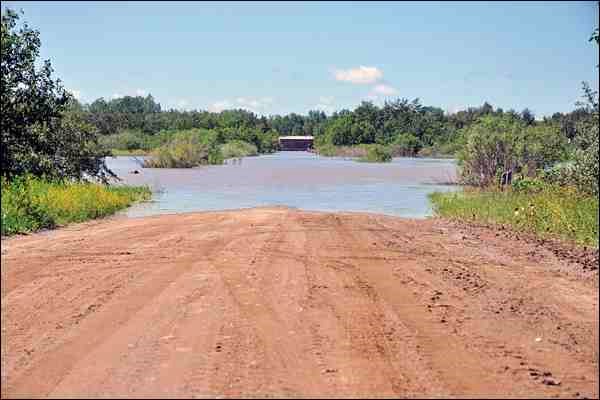The problems people in the Northwest region faced with flooding in 2013 were nothing compared to what happened in the province next door.
The flooding in Calgary and in other parts of southern Alberta, triggered by heavy rainfall that overwhelmed the rivers in the province, were definitely on the minds of those in our area over the past year.
The scale of the carnage in communities such as High River made the problems of those fighting floods in Saskatchewan seem tame by comparison.
The Northwest's first major flooding event in 2013 was the spring runoff, which affected communities along Highway 16.
The communities of Radisson, Maidstone and Borden all declared flooding emergencies during April and May.
Also included in the emergency declaration list were Poundmaker First Nation, which saw some evacuations, as well as Onion Lake First Nation and other areas.
A major sandbagging effort got underway in Radisson and Borden to keep the floodwaters out. Part of Highway 16 was completely submerged in water at one point, and remained that way for days as pumps were brought in. By mid-May, the situation had started to abate and officials said they were in recovery mode.
That was not the last flooding event the region had to worry about. Still to come was the overflowing of the North Saskatchewan River on June 26 in a one-in-50 year flooding event.
The river was expected to hit flows of 3,000 feet per second and followed close on the heels of the disastrous floods that had hit southern Alberta.
Residential areas, located on high ground throughout the Battlefords, were far away from danger. Still, the rising waters threatened the City's Water Treatment Plant No. 1 located right next to the river.
That prompted action from the City, as they shut down the plant and opted to rely solely on the secondary F. E. Holliday Water Treatment Plant until the flood situation passed.
A protective barrier was put up surrounding Water Treatment Plant No. 1. According to the account in the News-Optimist that week, the protective barrier was "720 feet long by approximately five to six feet tall. According to the city, approximately 600 tons of sand was used in its construction. Crews from the City of North Battleford, from North Battleford Fire Department, the office of the Fire Commissioner and Ministry of Environment worked throughout Tuesday night and into Wednesday morning to construct the barrier."
Local contractors G & C Asphalt and Unicon Pipeline helped provide equipment, haul sand and fill sandbags, and the Ministry of Environment sent in their forestry firefighting teams to help the effort as well.
Sandbagging efforts were also done at the Battlefords District Care Centre south of Battleford.
In the end, all efforts proved successful. While flood waters did make it up to the protective barrier, they stayed out of the water treatment plant itself. The only inconvenience was that the road to the plant was completely submerged for a brief period.
While the situation was hair-raising for officials, Mayor Ian Hamilton told reporters it was nothing like what was seen in southern Alberta. "There's nobody in danger. No lives are in danger."




